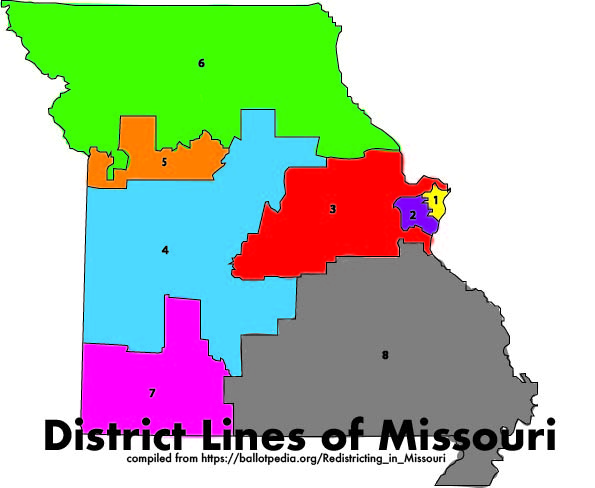
_Bryce Kolk is a freshman journalism major at MU. He is an opinion columnist who writes about politics for The Maneater._
Gerrymandering is a direct threat to democracy.
Representatives in power are able to, in the vast majority of states, draw district boundaries in a way that is likely to keep their party in office. Essentially, rather than have voters choose their representatives, gerrymandering allows representatives to choose their voters.
Missouri isn’t as gerrymandered as North Carolina, Michigan or New York. Missouri’s map unfairly favors Republicans, but there are far worse cases of gerrymandering.
Missouri is, however, leading the charge against partisan gerrymandering.
In the November midterm election, Missouri voters approved an amendment to the state constitution that would require the districts be redrawn more fairly. Though similar proposals have passed in other states, Missouri is the first to draw its districts based on a mathematical formula, rather than by representatives or experts.
In short, the new law is aimed at decreasing the efficiency gap in Missouri’s elections.
The efficiency gap is a formula used to compare the vote share a party gets in an election with the share of seats won statewide. A larger efficiency gap is an indicator of partisan gerrymandering. Getting the gap as close to zero is crucial in reforming elections.
Missouri’s efficiency gap in the November elections was 8 percent, favoring Republicans. It may not sound huge, but that equates to roughly 13 extra Republican seats in Missouri’s House of Representatives.
Using this formula to redraw districts is the best way to ensure a fair democracy.
In 37 states, the state legislatures were primarily responsible for redrawing districts, as of August 2017. Leaving the task of redistricting to state legislatures is the worst possible choice, as legislatures have the most incentive to redraw districts to skew to their benefit.
Missouri’s pioneering of redistricting policy could set the course for these states in the future. While efficiency gap isn’t perfect, using data to redistrict leaves much less room for bias.
Limiting gerrymandering is a relatively simple task and can go a long way to making legislatures more closely resemble their voting population.
There is more we can do to get representation even fairer, however. This solution would require an overhaul of our federal government.
There are far too few representatives in the U.S. House of Representatives as it stands.
Every district intends to represent around 750,000 Americans, though that number can vary widely in less populated states. Compare that number with the 57,000 that were represented in every district at the founding of our country in 1789.
America’s population keeps growing, but the number of representatives in the U.S. House of Representatives is locked at 435.
Adding more representatives allows for better representation as a whole. As districts swell, it’s harder for representatives to know their constituents.
Representative democracies work by grouping like-minded people into districts. Expanding those districts too far will inevitably lead to dissimilar people with dissimilar experiences having the same representative. As an example, it’s impossible for a representative to vote for the interests of both rural farmers and big-city urbanites.
It may seem like we’d be disavowing the Founding Fathers by making this change, but they were clearly worried about this exact scenario. The first proposal of the Bill of Rights included an amendment meant to cap districts at 50,000 Americans apiece.
The 50,000 standard that was proposed at the dawn of our country would be difficult to justify today, however. If it were kept, the House of Representatives would have nearly 6,500 members. This would make it the largest legislature in the world by far, as China currently has the largest at about 3,000 members. It would be impractical to have our legislature be the size of a modest city.
Having a rate of roughly 116,000 people per district, similar to Germany’s legislature, may be the best solution, which would expand the U.S. House to 2,801 members. It may seem like a lot, but it’s necessary to ensure an accurate representation of the country.
Two solutions exist as the most effective methods of reforming our democracy. Limiting gerrymandering is just the start if we truly want to restore representative democracy.